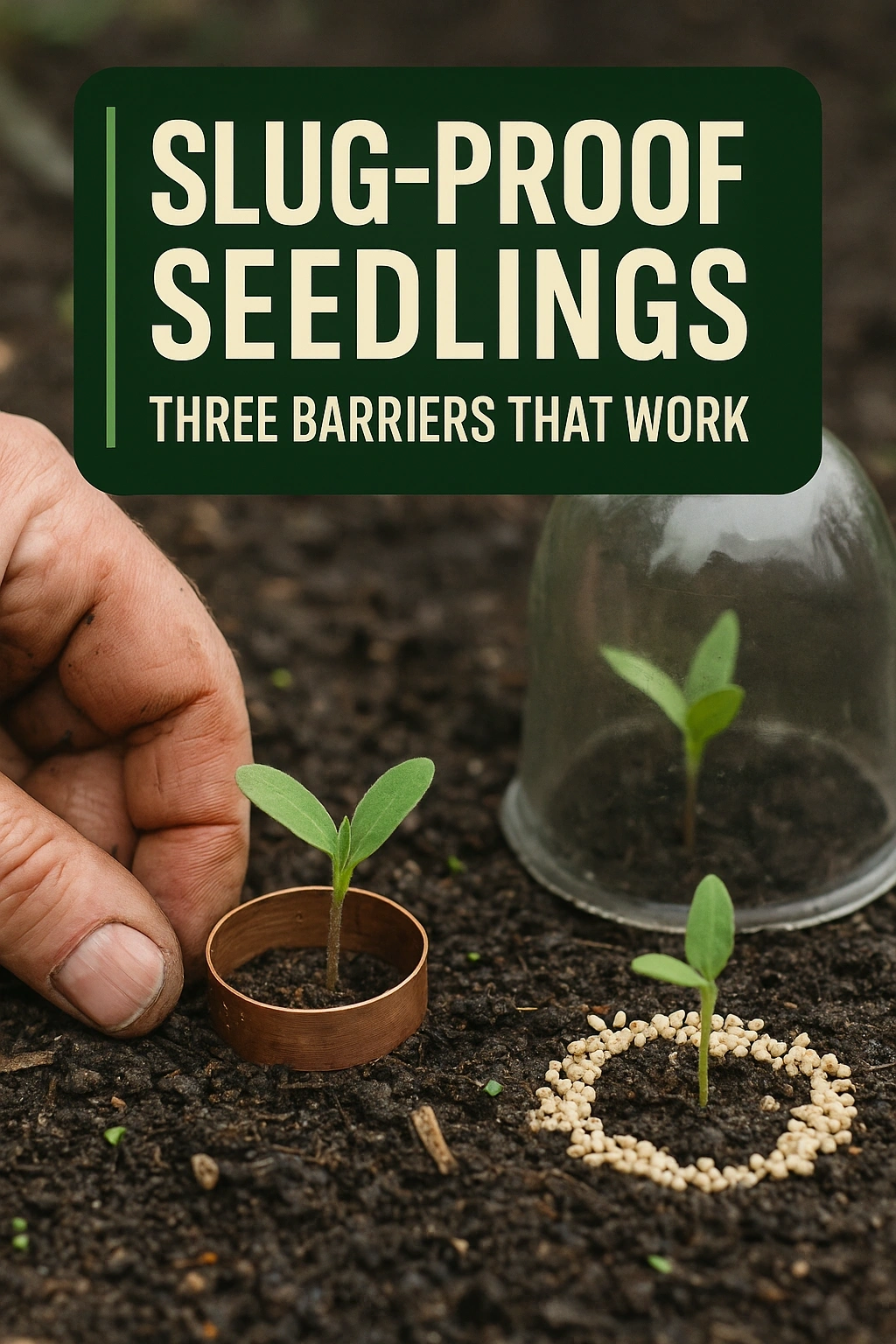
Protecting your seedlings from slugs can be a challenging task, but there are effective strategies that can help safeguard your young plants. Slugs are notorious for their destructive feeding habits, particularly targeting tender seedlings in gardens. In this article, we will explore three practical barriers that not only deter slugs but also promote healthy plant growth. By implementing these methods, you can ensure your seedlings thrive while minimizing damage from these garden pests.
Understanding Slugs and Their Impact on Seedlings
Slugs are soft-bodied mollusks that thrive in damp, shady environments. They are particularly active during the night and in overcast conditions, making them adept at sneaking into gardens unnoticed. Their feeding can lead to significant damage, including ragged holes in leaves and stunted growth, which can ultimately jeopardize the success of your gardening efforts. Understanding their behavior and preferences is crucial in developing effective barriers.
Behavioral Patterns of Slugs
Slugs are attracted to moist soil and decaying organic matter. They tend to congregate in areas where moisture is abundant, which is why newly planted seedlings are often prime targets. By knowing when they are most active, gardeners can better plan their protective strategies. During damp weather or after watering, slugs are more likely to emerge and feast on vulnerable plants.
Barrier Method 1: Copper Tape
Copper tape is a well-known slug deterrent that relies on the principle of electrical shock. When slugs come into contact with copper, they experience a mild electric shock, which discourages them from crossing the barrier. This method is easy to implement and can be quite effective in protecting seedlings.
How to Use Copper Tape Effectively
- Placement: Wrap copper tape around the pots of seedlings or around the garden bed’s perimeter.
- Height: Ensure the tape is at least a few inches above the ground to maximize its effectiveness.
- Maintenance: Regularly check the tape for dirt and moisture, which can diminish its effectiveness. Clean it as needed.
Barrier Method 2: Diatomaceous Earth
Diatomaceous earth (DE) is a natural powder made from the fossilized remains of tiny aquatic organisms called diatoms. When sprinkled around seedlings, it creates a rough texture that is abrasive to slugs. This barrier not only deters slugs but is also safe for plants and beneficial insects.
Applying Diatomaceous Earth in Your Garden
- Application: Lightly dust the area around your seedlings with diatomaceous earth, ensuring a continuous barrier.
- Reapplication: After rain or watering, reapply DE to maintain its effectiveness.
- Safety: Wear a mask while applying to avoid inhaling the fine particles.
Barrier Method 3: Physical Barriers
Creating physical barriers around seedlings can be highly effective in preventing slug access. These barriers can take various forms, such as mesh, netting, or even simple plant pots. The key is to create a protective enclosure that slugs cannot easily navigate.
Types of Physical Barriers
- Mesh Netting: Use fine mesh to cover seedlings, allowing sunlight and rain to reach them while keeping slugs out.
- Plant Pots: Cut the bottoms off plastic pots and place them around seedlings to create a protective barrier.
- Raised Beds: Consider using raised beds with a base that prevents slugs from crawling in from the ground.
Integrating Barriers for Optimal Protection
For the best results, consider integrating multiple barrier methods. Combining copper tape, diatomaceous earth, and physical barriers can create a comprehensive defense against slugs. This multi-faceted approach not only increases the likelihood of protecting your seedlings but also fosters a healthier gardening environment.
Creating a Slug-Proof Garden
In addition to barriers, maintaining a healthy garden ecosystem can help deter slugs naturally. This includes managing moisture levels, keeping the garden tidy, and encouraging natural predators like birds and beetles that feed on slugs. A proactive approach will lead to a flourishing garden where seedlings can thrive without the threat of slug damage.
FAQs
What time of year are slugs most active?
Slugs are typically most active during the spring and fall when temperatures are mild and moisture levels are high. They tend to hide during hot, dry periods.
Can I use salt to deter slugs?
While salt can kill slugs by dehydrating them, it is not a recommended method for protecting seedlings as it can also harm the soil and nearby plants.
How often should I reapply diatomaceous earth?
It’s advisable to reapply diatomaceous earth after heavy rain or watering, as moisture can reduce its effectiveness.
Are there any plants that repel slugs?
Yes, certain plants like lavender, rosemary, and sage are known to repel slugs due to their strong scents. Incorporating these into your garden may help deter them.
Can I use organic solutions to control slugs?
Many organic solutions, such as beer traps or coffee grounds, can help control slug populations without harming your plants. These methods can be used in conjunction with physical barriers for enhanced protection.
